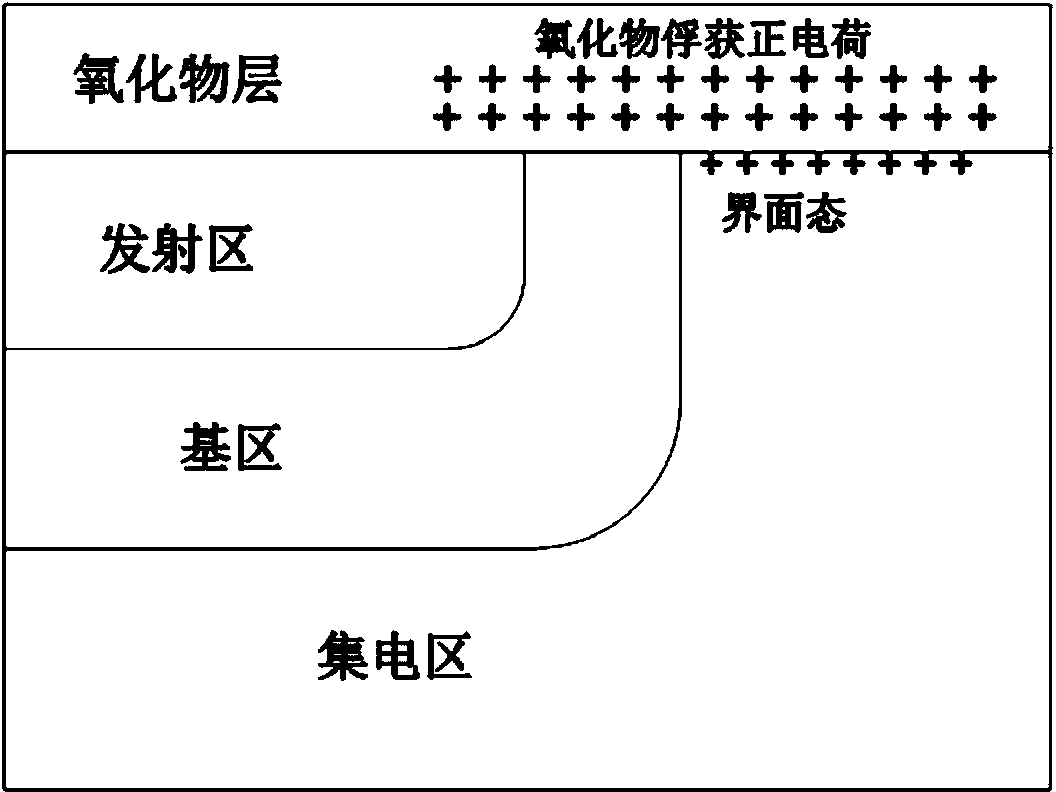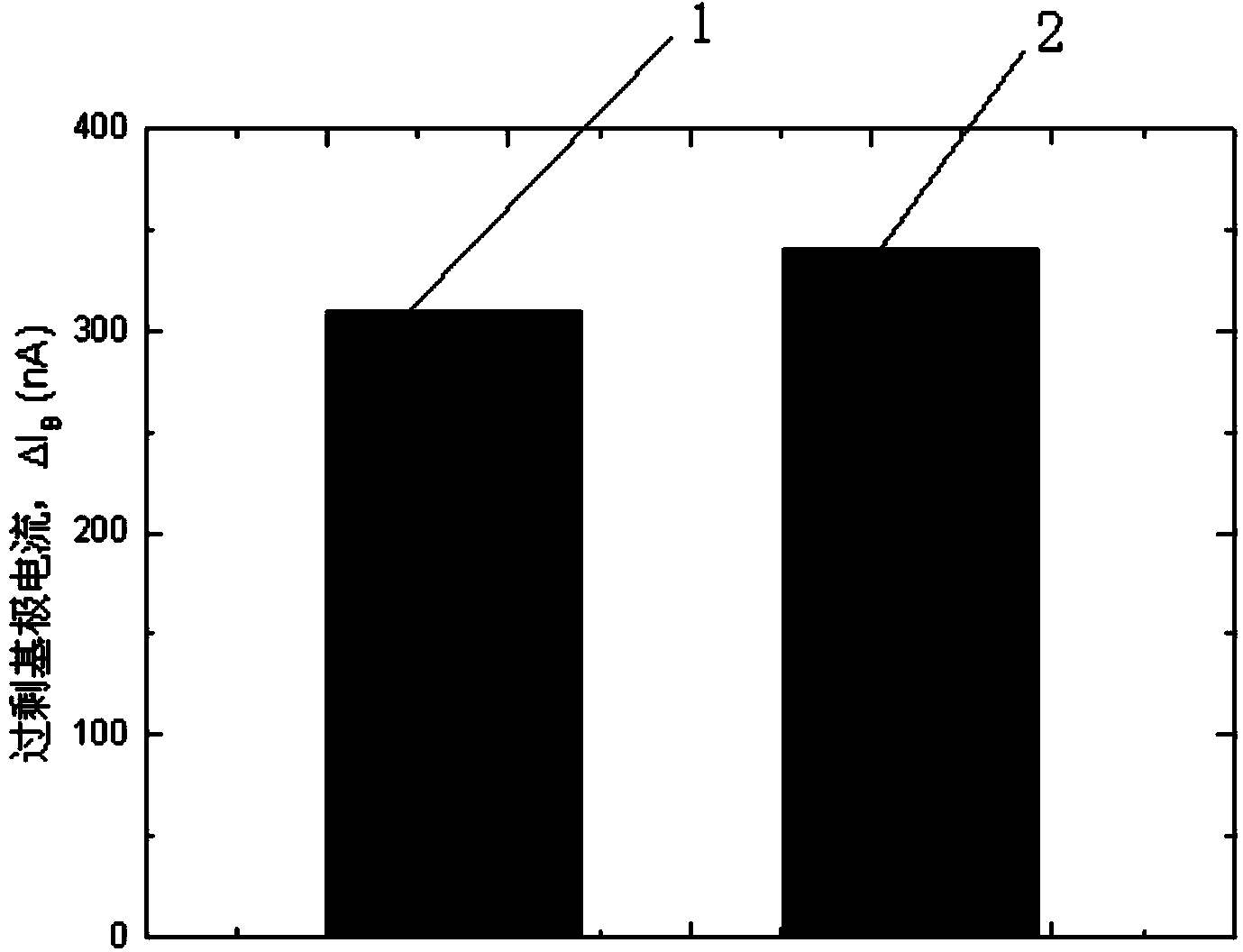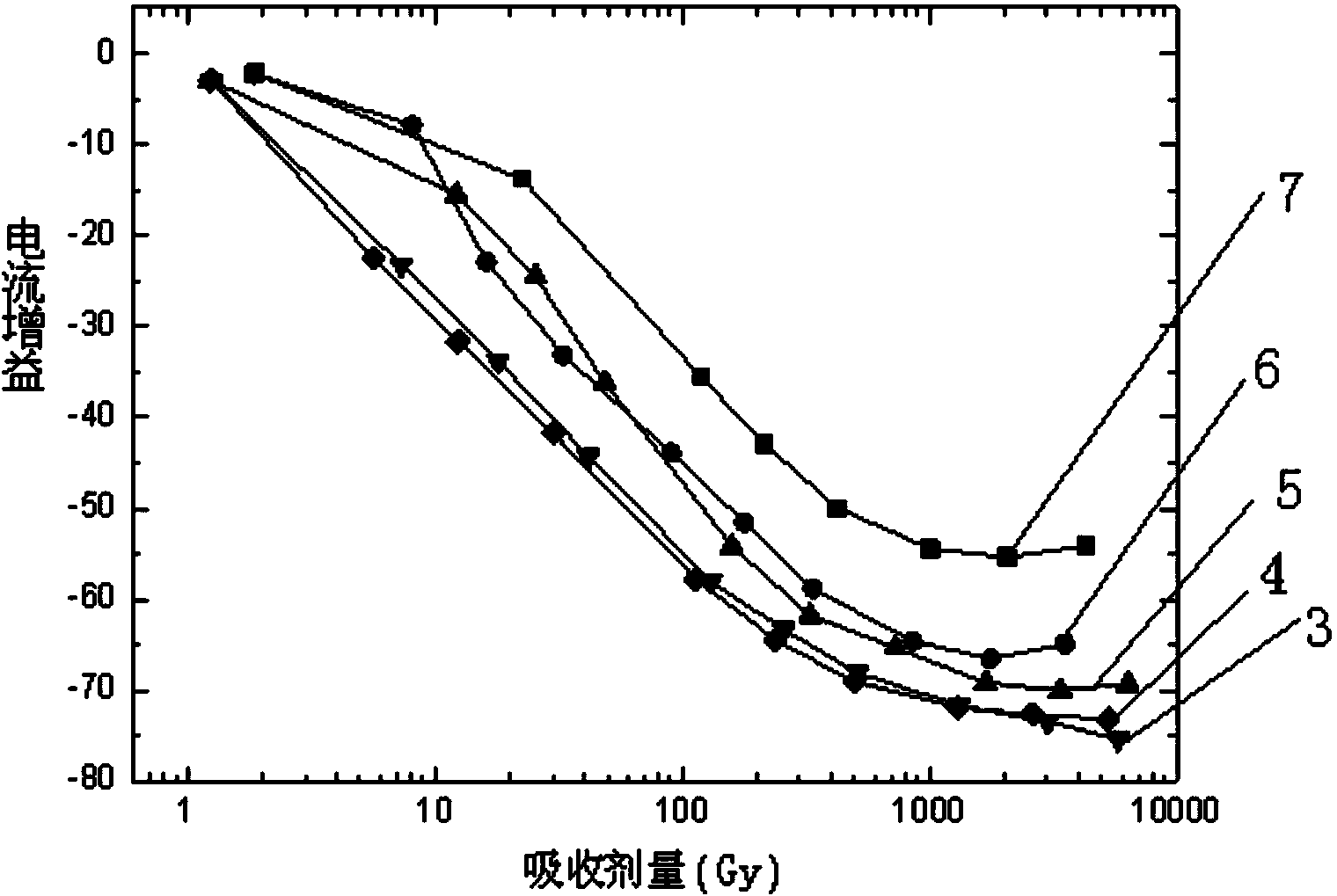Method for acceleration test of low-dosage-rate enhancement effect of bipolar device based on high-temperature hydrogen soaking technology
A bipolar device, enhancement effect technology, applied in the field of electronics, can solve the problem of long irradiation time
- Summary
- Abstract
- Description
- Claims
- Application Information
AI Technical Summary
Problems solved by technology
Method used
Image
Examples
specific Embodiment approach 1
[0014] Specific embodiment one: a kind of bipolar device low dose rate enhancement effect accelerated test method based on high temperature hydrogen immersion technology described in this embodiment, it comprises the following steps:
[0015] Step 1. Use TCAD software to simulate the electrical properties of the bipolar device and the change law of ionizing radiation defects in the hydrogen atmosphere. According to the oxide charge and interface state density in the bipolar device in the hydrogen atmosphere, the hydrogen immersion time is 10 Minutes to 5 hours, the hydrogen concentration range is 0.01%-200%;
[0016] Step 2. Place the bipolar device in step 1 in the glass tube, use a mechanical pump to evacuate until the vacuum in the glass tube is equal to or less than 0.0001Pa, and then inject hydrogen into the glass tube until the vacuum in the glass tube The hydrogen concentration is the hydrogen concentration obtained in step one, and the glass tube is sealed until the hy...
specific Embodiment approach 2
[0025] Specific embodiment two: The difference between this embodiment and the accelerated test method for low dose rate enhancement effect of bipolar devices based on high-temperature hydrogen immersion technology described in specific embodiment one is that in step three, the heating temperature is 150 ~200°C, the holding time is 10 minutes to 120 minutes.
[0026] In this embodiment, the heating temperature is high, which is beneficial to the diffusion of hydrogen gas, so the heat preservation time for the sealed glass tube can be shortened, and the test time can be shortened.
specific Embodiment approach 3
[0027] Specific Embodiment 3: The difference between this embodiment and the accelerated test method for low dose rate enhancement effect of bipolar devices based on high-temperature hydrogen immersion technology described in specific embodiment 1 is that in step 1, the time for hydrogen immersion is obtained The specific method with hydrogen concentration is:
[0028] Using TCAD to simulate the oxide charge density and interface state density in the bipolar device in the hydrogen atmosphere under different hydrogen immersion time and hydrogen concentration combinations, select the oxide charge in the bipolar device in the hydrogen atmosphere according to the simulation results The density is 1E10 / cm 3 to 1E15 / cm 3 range, and the interface state density in a bipolar device in a hydrogen atmosphere is 1E10 / cm 3 to 1E15 / cm 3 Any set of hydrogen immersion time and hydrogen concentration in the multiple sets of data within the range is used as the selection result.
PUM
 Login to View More
Login to View More Abstract
Description
Claims
Application Information
 Login to View More
Login to View More - Generate Ideas
- Intellectual Property
- Life Sciences
- Materials
- Tech Scout
- Unparalleled Data Quality
- Higher Quality Content
- 60% Fewer Hallucinations
Browse by: Latest US Patents, China's latest patents, Technical Efficacy Thesaurus, Application Domain, Technology Topic, Popular Technical Reports.
© 2025 PatSnap. All rights reserved.Legal|Privacy policy|Modern Slavery Act Transparency Statement|Sitemap|About US| Contact US: help@patsnap.com



